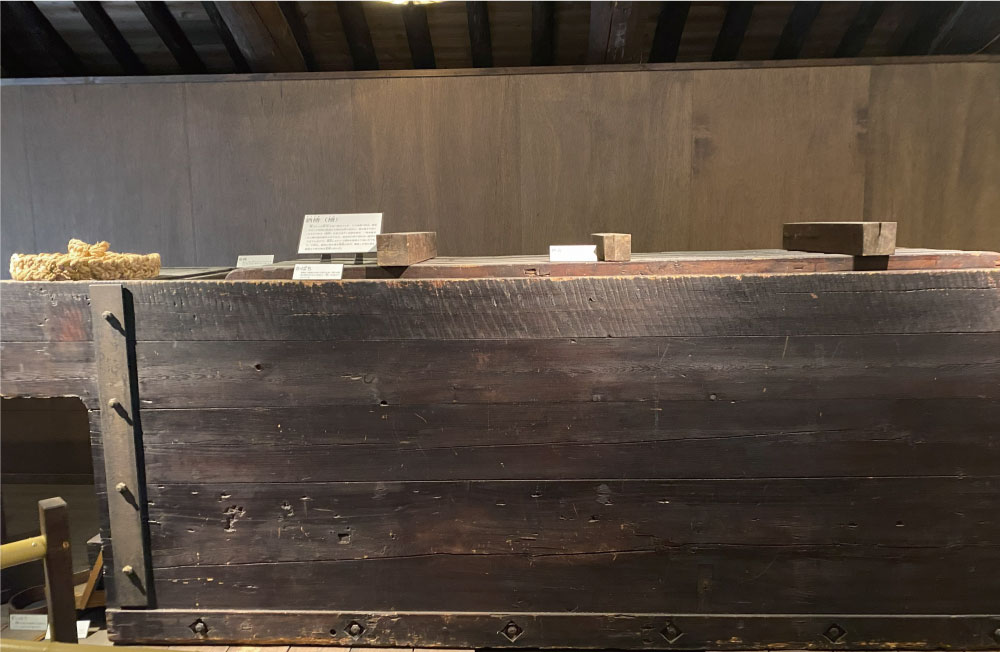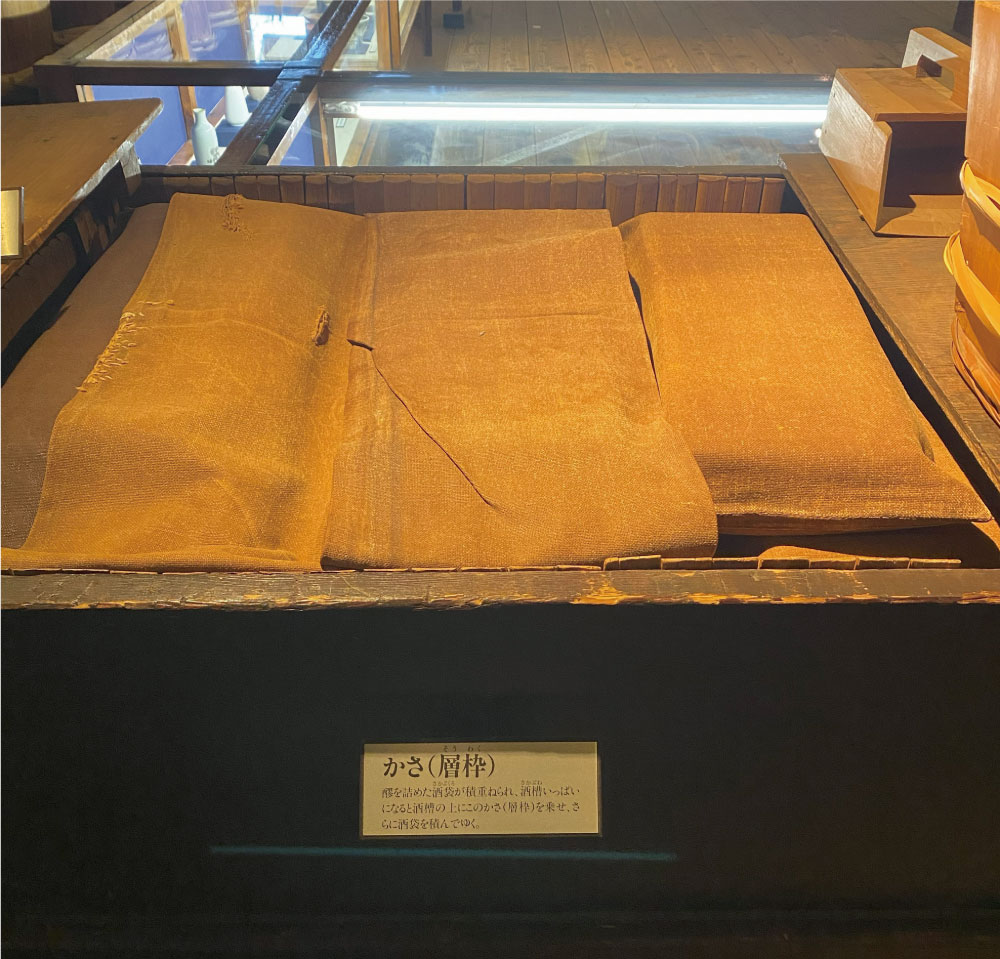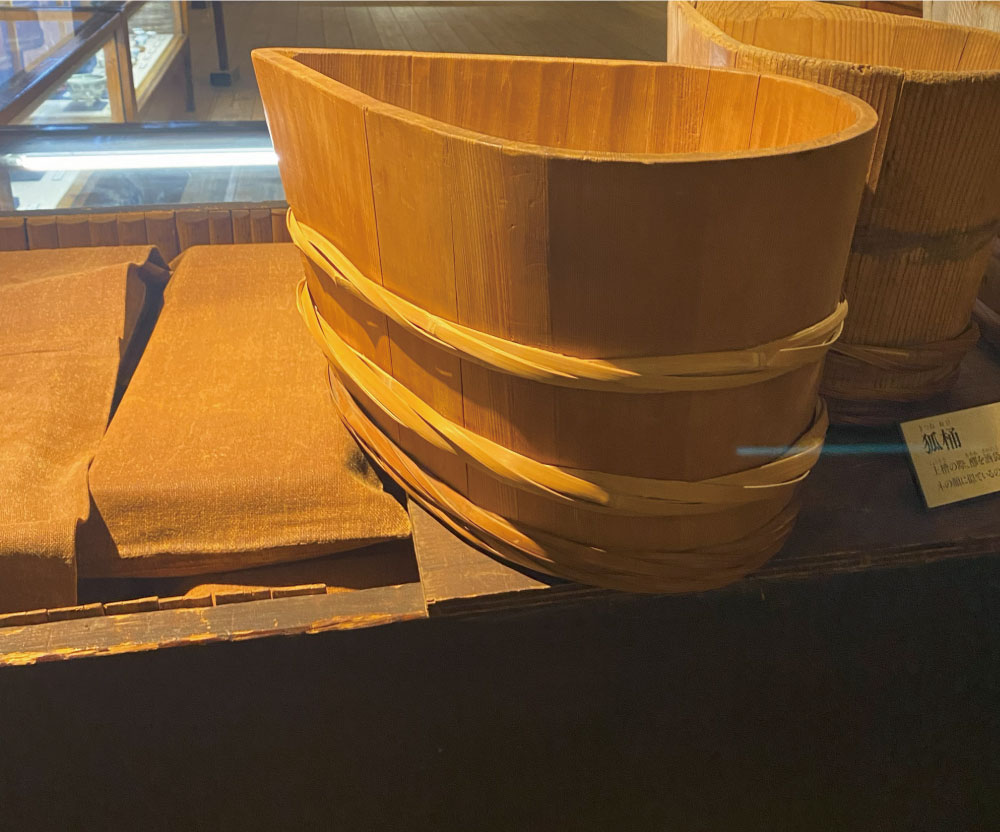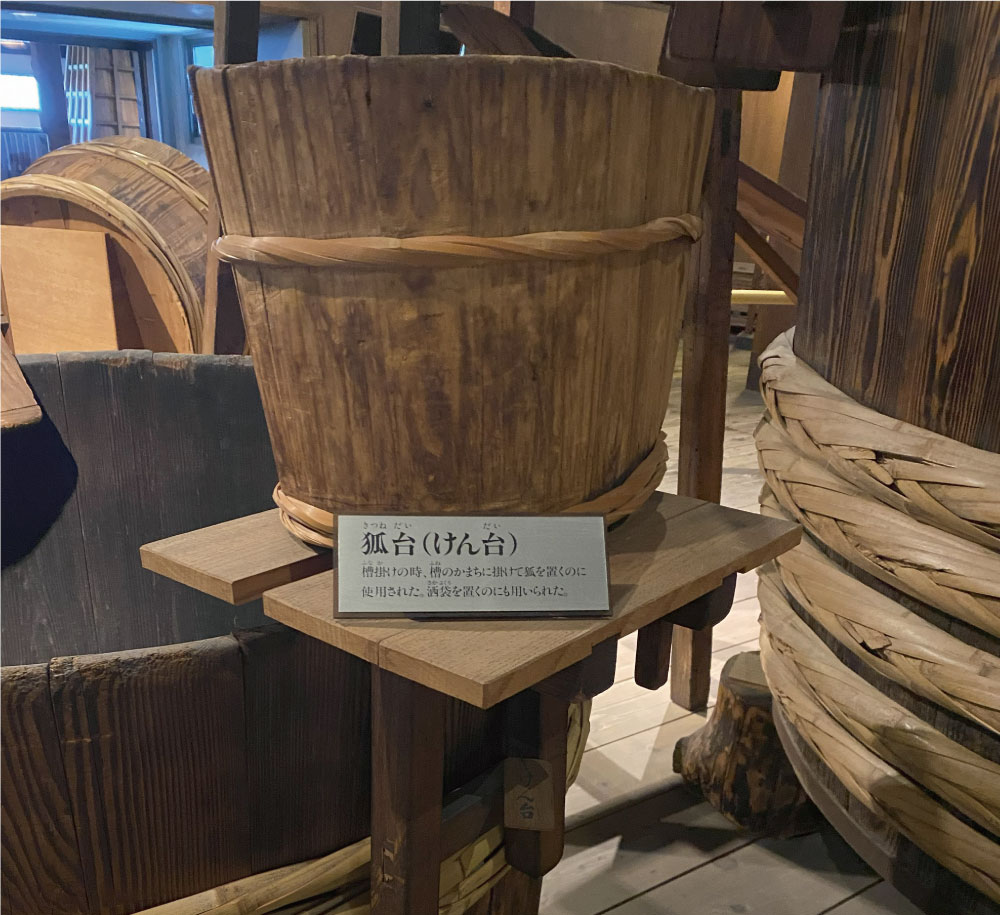Filtering (Joso)
Moromi which has finished fermenting is filled into sake bags using kitsune, wooden buckets with a shape like the face of a fox. The bags are then stacked in the sakabune (sake press).
Sake begins to seep from the piled up sake bags when pressure is applied from the top, leaving the bags filled with only sake lees. Freshly brewed sake is cloudy, so it is kept in the tubs for about a week until the sediment has settled.
Tools on Display
Sake Press (Fune)

Sake bags containing moromi are placed side by side in this sake press and pressed. For the first 4 to 6 hours, sake naturally flows out of the bags and their height lowers, so the kasa (layer frame) is removed, and pressing begins. After a day and a night, the amount of sake flowing out decreases, and there are parts here and there that cannot be pressed out, so the sake bags are reloaded and pressed with great force for another day. The first press used for pressing was called the age-fune, and the one used after reloading was called the seme-bune.
Kabachi
The name for the wooden frame on the upper edge of the sake press. Cherry wood is commonly used. Said to be a dialectal form of kamachi (frame).
Kasa (Layer Frame)

Sake bags filled with moromi are piled up, and when the tank is full, this frame is placed on top of the tank, and more sake bags are loaded in.
Kitsune-oke (Fox Tub)

During filtering (joso), the moromi is packed into sake bags using this tub. Its name comes from its shape, which resembles the face of a fox.
Kitsune-dai (Ken-dai) (Fox Stand)

Used to place the kitsune-oke on the frame of the press during pressing. It was also used to hold sake bags.
